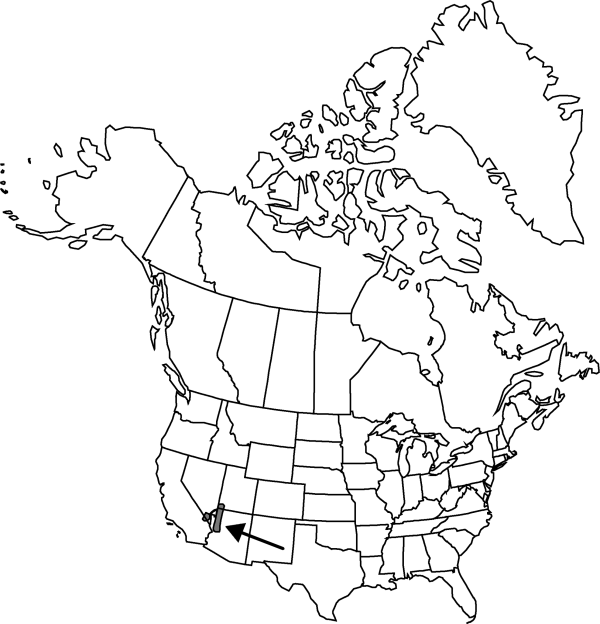Coryphantha chlorantha
Cact. 4: 43. 1923.
Plants usually unbranched (rarely to 12 branches), usually most protruding above ground level, stiff and strictly erect, densely covered with spines. Roots diffuse or short taproots, largest roots basally less than 1/5 of stem diam. Stems spheric to short cylindric, 3.5–15 × 3.5–9.5 cm; tubercles 9–14 × 4–7 mm, stiff; areolar glands absent; parenchyma not mucilaginous; druses in pith and cortex sporadic, some giant, to 1 mm, lenticular; pith 1/3–1/2 of lesser stem diam.; medullary vascular system conspicuous, diffuse, present even in immature plants. Spines 18–41 per areole, lightly pigmented, white to pale pinkish gray (varying geographically), brightest when fresh, weathering to gray, dark tips present on all or all but smallest spines; radial spines (12–) 15–33 per areole, 7.5–16.5 (–19) × 0.1–0.4 mm; subcentral spines 1–7 often present adaxially; outer central spines 1–11 per areole; inner central spines (0–) 1 (–2) per areole, porrect or ascending (other central spines usually not or weakly appressed), in bird’s-foot arrangement or radiating evenly in adults, straight, largest spines 13.5–20.5 × 0.3–0.6 (–0.8) mm. Flowers nearly apical, 18–44 × 8–37 mm; outer tepals densely fringed; inner tepals 13–34 per flower, ascending or recurved only at tips, pale dull creamy yellow or pale greenish tan to pale yellow-orange or pale apricot, usually with well-defined darker midstripes of maroon, magenta, pink, brownish orange, or yellow-green, proximally reflective, mirroring anthers, 11–25 × 1.8–2.8 mm; outer filaments white, pale-pink, or white with pinkish distal 1/2, not contrasting with inner tepals; anthers bright orange-yellow; stigma lobes 4–11, erect or ascending, white to greenish white, nonstigmatic parts slightly pink, 2.5–4.5 mm. Fruits pale green, exposed parts sometimes dull rose-pink, ellipsoid to ovoid, 12–31 × 5–11 mm, succulent; floral remnant on fruit strongly persistent. Seeds reddish-brown, ± obovoid or comma-shaped, 1.4–1.8 mm, pitted. 2n = 22.
Phenology: Flowering Apr–Jun(-Sep); fruiting time unknown.
Habitat: Desert calcicolous scrub, Larrea scrub, blackbrush scrub, pinyon-juniper woodlands, limestone or dolomite rocky slopes, gravelly bajadas (rarely granite or basalt)
Elevation: (300-)500-1700(-2400) m
Distribution

Ariz., Calif., Nev., Utah.
Discussion
Coryphantha chlorantha is vegetatively identical to C. vivipara in the broad sense; without fresh flowers or reliable flower data, only an expert can distinguish C. chlorantha from C. vivipara, with which it sometimes grows sympatrically. Populations of C. chlorantha can be distinguished by their small, less-widely opening flowers, which are usually yellowish or pale pink-and-cream-striped, in contrast with the large, widely opening, purple flowers of C. vivipara.
Coryphantha chlorantha is more easily distinguished from C. alversonii, with which it is allopatric. Flowers of both are intermediate between those of C. vivipara and C. sneedii. Like C. sneedii, but unlike C. alversonii, C. chlorantha is polymorphic with respect to flower color, at least in some parts of its range. The “green” morph, for which chlorantha was named, probably is in the minority. A history of misidentifications limits the reliability of published photographs and distribution maps. The Arizona report of C. alversonii (L. D. Benson 1969) was based upon misidentified C. chlorantha or C. vivipara var. rosea.
Selected References
None.